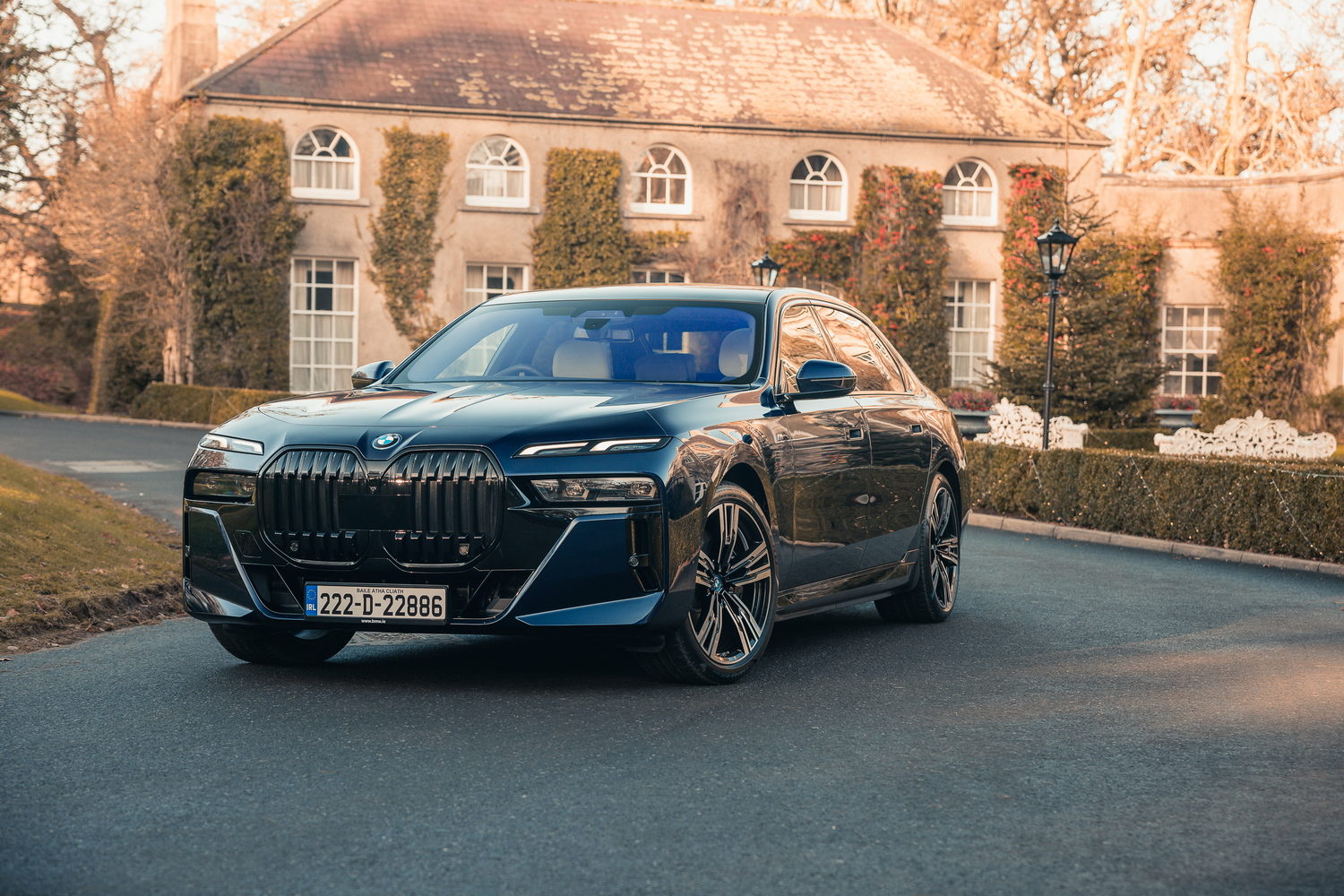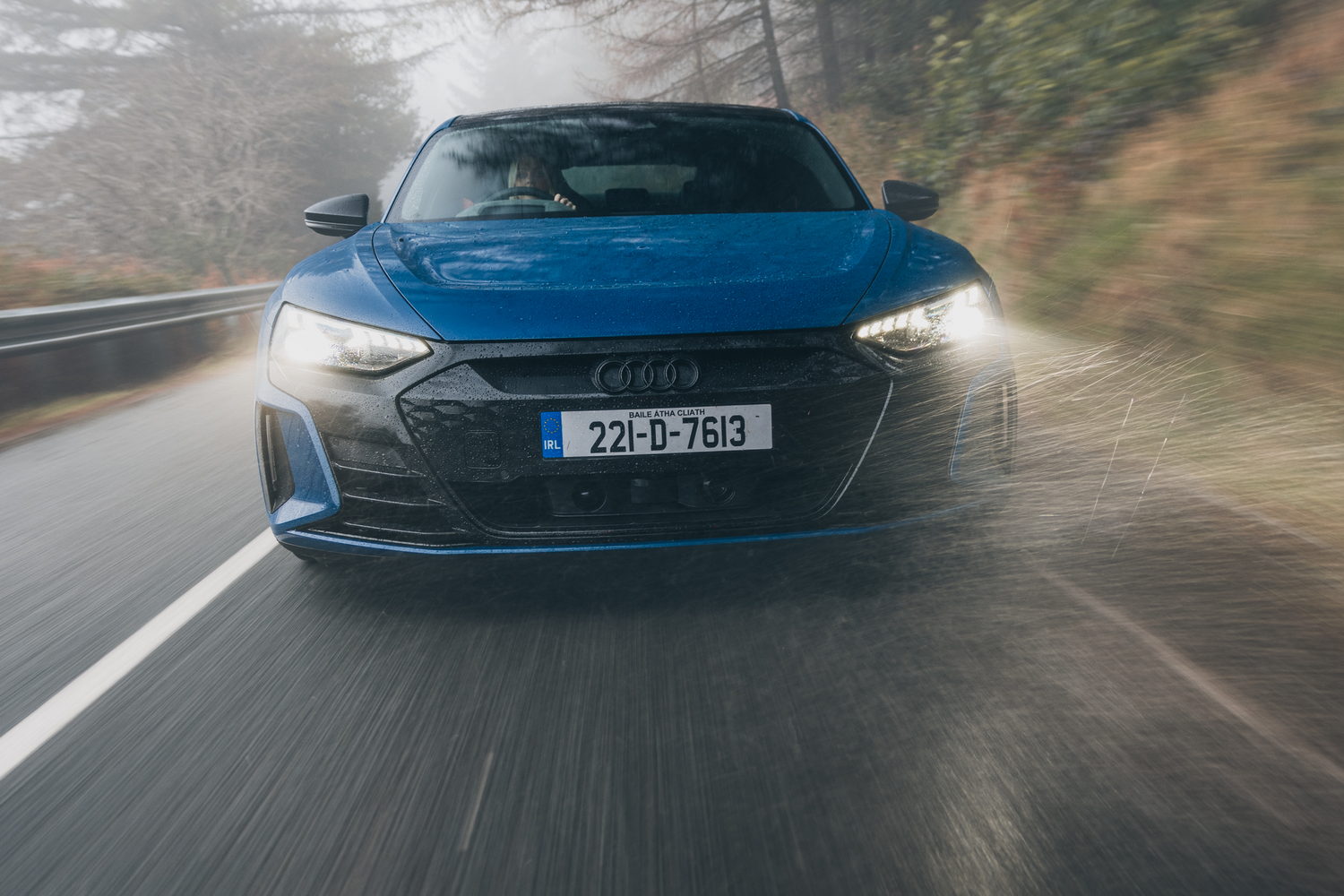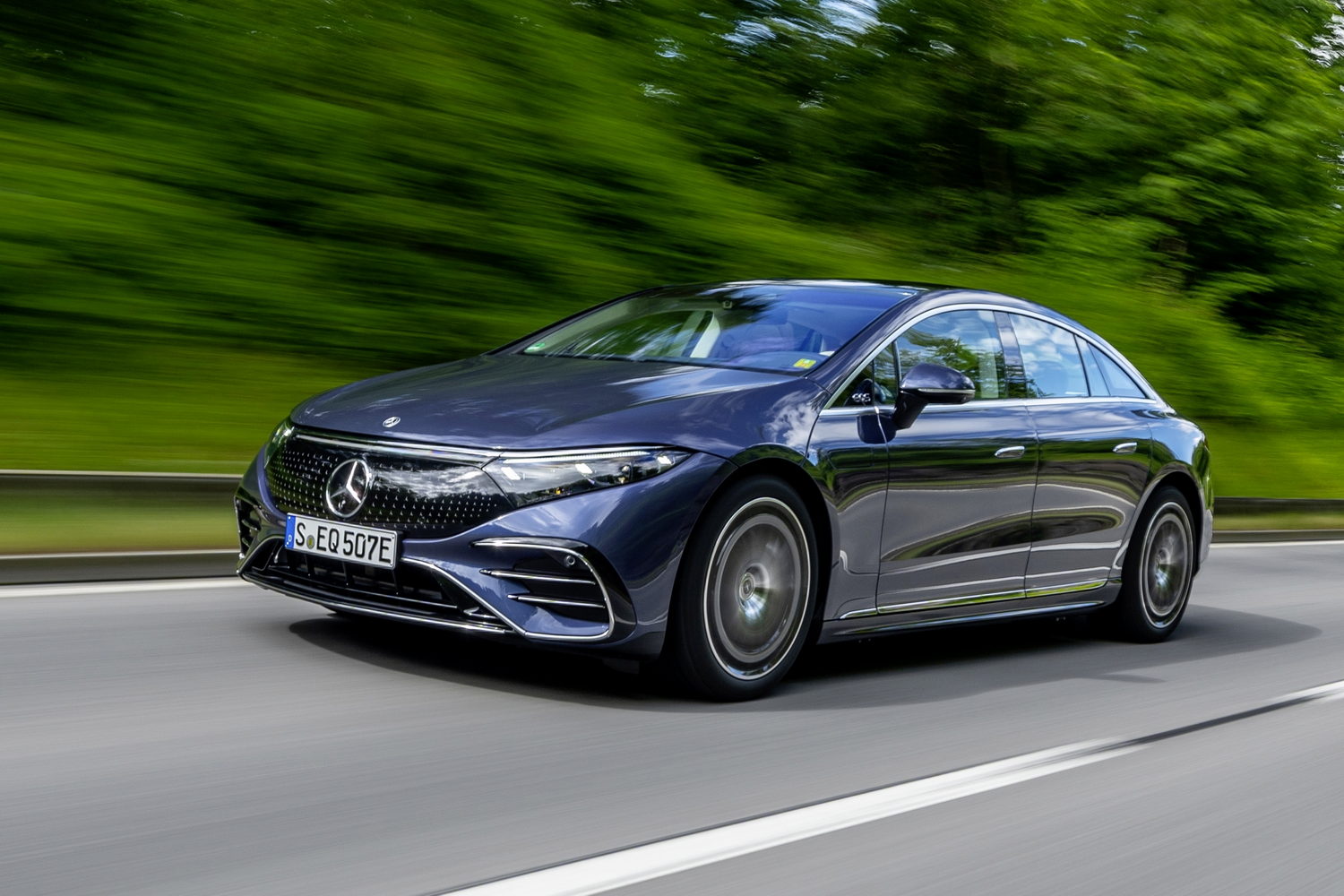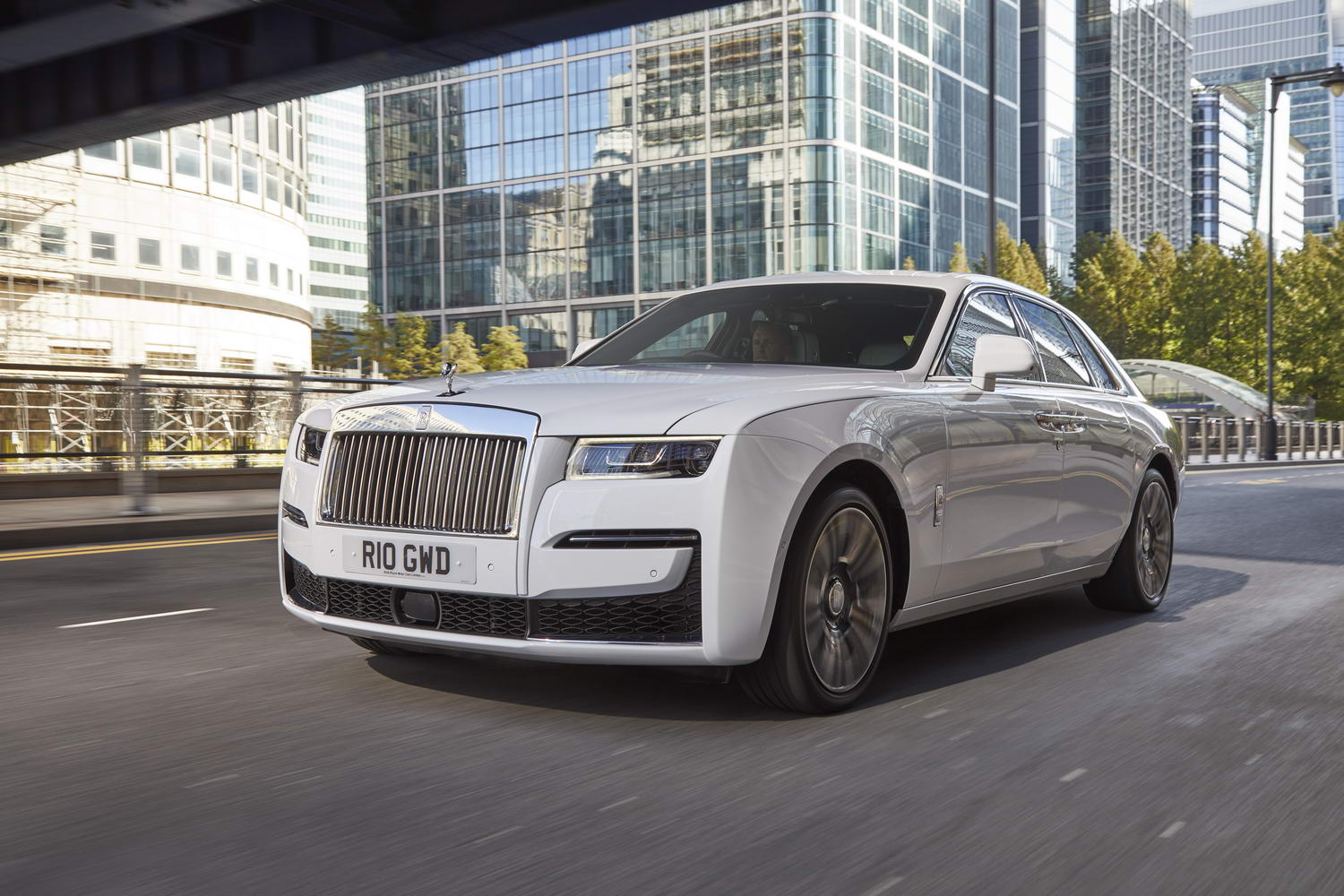BMW i7 overview
If you're looking for a discreet sort of luxury, look elsewhere. The BMW i7 - the fully-electric version of the new 7 Series - eschews the understated look of rivals from Mercedes and Audi and instead swings for the fences with big, square-shouldered, jutting-jaw styling that looks slightly like a 1980s soap opera hunk rendered in metal and carbon. If the styling doesn't put you off (and it is actually something of a grower - check out that shark-nosed profile to the nose when seen from side-on) then the technical specification is mouth-watering, including a big battery for a lengthy range, M-car power output and air suspension for comfort and control. Add all that together with a stunning interior and BMW looks to be onto a winner in the luxury car class.
The BMW i7 model range
The i7 is currently only sold as the xDrive60 version, with two motors, 544hp, all-wheel drive and a 101kWh battery - though there is a choice of four trim levels. At the base of the range is the €138,491 Excellence model, which includes 19-inch wheels, an electric boot lid, auto-dimming mirrors, the 'Iconic Glow' light-up grille, soft-close doors, the curved dashboard display that joins the 12.3-inch instrument panel and the 14.9-inch infotainment screen together, front and rear heated seats, Merino leather upholstery, panoramic glass sunroof and four-zone climate control. As standard, you also get a Bowers & Wilkins sound system, active cruise control with braking, the 'BMW Interaction Bar' (more on that later), a head-up display and adaptive LED headlights.
Above the Excellence, there's an Excellence Pro model that includes 20-inch alloys, auto front and rear doors, massaging rear seats, rear electric blinds, the 'Sky Lounge' panoramic glass roof (which includes LED lighting elements) and ventilated front and rear seats. That'll cost you €146,492.
Next up is the M Sport model, which is the one we're testing. That costs €141,385 and includes 20-inch 'M Aero' alloy wheels, black exterior trim instead of chrome, BMW's 'Iconic Sounds Electric' sound effects, an M leather steering wheel and M Sport brakes with dark blue calipers.
At the top of the range is the M Sport Pro, which includes 21-inch alloys, automatic front and rear doors, a rear spoiler, front massage seats, the 'Sky Lounge' panoramic roof, ventilated front and rear seats, M Sport brakes and the amazing 'BMW Theatre Screen' - a 31-inch touchscreen entertainment system for the rear seats that folds away into the roof. That'll set you back €155,787.
On the safety front, the i7 has not yet been independently tested by EuroNCAP, but it shares a great deal with the iX SUV, and that scored a full five-star rating. The i7 comes, as standard, with a driver monitoring system, adaptive LED headlights, automatic wipers and headlights, collision preparation (which tightens the seatbelts and winds up the windows), crossing traffic warning, a blind-spot monitor, tyre pressure sensors and an exterior acoustic sound that warns pedestrians of the i7's approach when it's running at low speeds.
The BMW i7 interior
Your views on the exterior styling of the i7 may vary, but we honestly doubt if your views on the cabin will be all that different - it's basically spectacular. There are one or two duff notes (or at least a couple of items with question marks), but for the most part this is an amazing interior.
The screens are controlled by a mixture of voice, touch, steering wheel buttons and the old, reliable iDrive click-wheel down on the centre console that is now rendered in a tactile crystal glass. For the most part the graphics look expensive and crisp, but it's a shame that you can't really alter the instrument panel very much - you can change what information is displayed in the centre of the screen, but the rest is immobile, which seems a bit of a shame given that Mercedes allows you to change its instrument screens around almost as much as you like.
The main infotainment setup is very good, with fairly easy menus (although some items, such as unlocking the charging cable, can take too many swipes and presses for our liking) and the likes of Apple CarPlay and Android Auto are well-integrated. The main heating and ventilation controls are on the screen at all times, and while they work well there's a clear limitation - there are so many functions that you actually have to swipe the screen slightly from left to right to access them all. We do love the way the main air vents are hidden in the structure of the dash, and the physical buttons used to control them are very tactile.
Speaking of buttons, there are the electric seat controls, mounted on the doors, which are made of what we can only describe as imitation cut-glass crystal. They would look enormously tacky but they're overshadowed by the BMW Interaction Bar, made of the same imitation crystal, which runs the full width of the dash and into the door panels. This lights up according to the driving mode you've selected, and can also flash warnings such as collision avoidance, or just that you've turned the hazard lights on. It's definitely a statement piece, but one could learn to love it. Up on the doors, there's a complex piece of turned and sliced aluminium that covers over the speakers for the brilliant Bowers & Wilkins stereo, which lends a nice touch of serious tactility to the digital-heavy cabin.
If there's a flaw, it's in the storage space. The door pockets are a little narrow, and in the centre console there's only the two cupholders, a wireless phone charging pad and a shallow storage bin under the front seat armrest. If you're going on a long journey, you'll soon have all those filled up.
That's compensated for by extraordinary comfort levels. The front seats feel more comfortable and more supportive than anything you might have in your home. Equally, in the rear (where there's lots of space for legs thanks to the wheelbase actually being slightly longer than that of the old 7 Series 'L' model) the seats are sumptuous, and can be electrically adjusted using one of the 5.5-inch phone-style touchscreens built into the door panels. If you're in the left-hand rear seat, and no-one's sitting in the front passenger seat, then you can push a button that converts the rear into a club-class airline style lie-flat (well, almost flat) seat allowing you to fully recline with your legs stretched out. It's quite the way to pass a long journey, and equally wonderful if you're sitting, waiting for a public charging point to open up. There's a big armrest in the centre, with a pop-out cupholder and a phone charging pad. You can flip that up to open up a third rear seat, but it's pretty narrow and anyone sitting there is going to be well jealous of those in the outer two seats.
The boot is slightly small considering what a behemoth the i7 is - a capacity of 500 litres is adequate, but nothing more than that, although there's a handy under-floor storage area that is a great place to stash a charging cable. Speaking of charging, while the front-seat occupants get two USB-C sockets in the armrest storage box, those in the rear get rather groovier USB-C sockets built into the back of the front seats, under a little sliding cover.
The cabin really comes to life at night. Then, the soft ambient lighting (which uses the Interaction Bar), the little tendrils of light in the optional Sky Lounge panoramic glass roof and the general air of comfort make a long journey seem exceptionally easy.
The BMW i7 driving experience
Let's talk about the i7's electric performance first, as it's probably the most disappointing aspect of the car. With a 101.7kWh (net) battery and an official range of up to 625km, that might sound a bit surprising, but the i7 struggles to deliver anything like that sort of range in real life. Now, admittedly, our test took place in winter and involved lots of motorway driving, both of which take their toll on battery performance, but even so a range of 450km - which was the realistic figure we achieved - is rather unsatisfactory. That's especially so when you consider that a rival Mercedes EQS would top 550km in the same conditions.
You might be able to stretch the range to 500km with a little more care and attention, but when BMW is quoting more than 600km, that still seems a little underwhelming. On the upside, the i7 charges very rapidly. There's a function, selected on the main touchscreen, that preps the battery for rapid charging (and which is automatically activated when you enter a charger into the navigation) and once connected to a high-speed ESB or IONITY charging point, the i7 happily gulped down charge at as much as its maximum quoted 195kW charging speed, only slowing down once above 80 per cent state of charge. For slower charging, there's an 11kW AC charger.
Where the i7 hits back, convincingly, against the EQS is in how it drives. The big Merc feels pretty remote when you're cornering. Not so the i7. Which is not to say it feels overtly sporty when you get in it. Activate the 'Efficient' driving mode and the i7 just slinks along, with that wonderful air suspension soaking up the worst that the road can throw at you. It's one of the rare air suspension systems that doesn't seem to get fazed by short, sharp urban bumps and combined with sepulchral suppression of road and wind noise, the i7 is one of the most outrageously comfortable and refined cars you can drive. You'd honestly have to upgrade to a vastly more expensive Rolls-Royce to get better than this, and even then I'm not sure there's much of a gap between the 7 and the Rolls when it comes to quietness.
Of course, this is still a proper BMW and it responds like one when you want it to. Tug the single paddle behind the steering wheel to select 'Boost' mode and not only does the dashboard flash red, so too does your peripheral vision as the i7 launches itself forwards. It's not the fastest EV around by a long stretch, but with 745Nm of torque available, it sure doesn't hang about. The steering feels relatively light, but purposeful, and if there's not quite the sort of feel and feedback that keener drivers might ultimately hope for, then at least there's more than you'd find in most rivals. The i7 carves through corners just as effectively as it eats up straights and, in spite of weighing an elephantine 2.7 tonnes, it never feels anything less than agile.
Well, until you get it into town anyway. Then the sheer bulk of the i7 makes itself felt, and you'll start to wish you'd ticked the box for the optional rear-wheel steering to make it more manoeuvrable in tight corners. It will fit in a conventional multi-storey car park, but only just.
Our verdict on the BMW i7
While you can pretty easily pick holes in the i7's over-promise and under-delivery of its one-charge range, in every other aspect this is a wildly impressive car. Its refinement and comfort levels are pretty well second to none, and it runs rings around most rivals when the road gets twisty and difficult.



























































